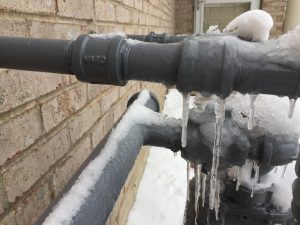Avoiding Frozen Pipes: Effective Strategies for Cold Weather
Avoiding Frozen Pipes: Effective Strategies for Cold Weather
Blog Article
What are your insights and beliefs about Winter Plumbing Precautions: Preventing Frozen Pipes?

Winter can wreak havoc on your plumbing, specifically by freezing pipelines. Below's just how to prevent it from occurring and what to do if it does.
Intro
As temperature levels decline, the threat of frozen pipes increases, potentially causing expensive fixings and water damage. Understanding how to stop icy pipes is critical for home owners in chilly environments.
Understanding Icy Pipelines
What causes pipelines to freeze?
Pipelines ice up when exposed to temperature levels below 32 ° F (0 ° C) for prolonged periods. As water inside the pipelines freezes, it increases, putting pressure on the pipeline walls and potentially causing them to break.
Dangers and damages
Frozen pipelines can lead to water system disturbances, residential property damage, and pricey fixings. Burst pipelines can flooding homes and cause substantial architectural damages.
Indicators of Frozen Pipeline
Identifying frozen pipes early can stop them from bursting.
Exactly how to identify frozen pipelines
Try to find reduced water flow from faucets, unusual smells or noises from pipes, and noticeable frost on subjected pipes.
Prevention Tips
Insulating susceptible pipes
Cover pipelines in insulation sleeves or make use of heat tape to safeguard them from freezing temperatures. Focus on pipelines in unheated or external locations of the home.
Heating strategies
Keep interior areas appropriately heated up, particularly areas with pipes. Open closet doors to permit warm air to circulate around pipes under sinks.
Shielding Outdoor Plumbing
Yard hoses and outdoor faucets
Separate and drain pipes garden tubes before wintertime. Mount frost-proof faucets or cover outdoor faucets with protected caps.
What to Do If Your Pipes Freeze
Immediate activities to take
If you presume icy pipes, keep faucets available to soothe stress as the ice thaws. Make use of a hairdryer or towels soaked in hot water to thaw pipes gradually.
Long-Term Solutions
Architectural changes
Take into consideration rerouting pipelines away from exterior wall surfaces or unheated locations. Include extra insulation to attics, basements, and crawl spaces.
Upgrading insulation
Buy top quality insulation for pipes, attic rooms, and walls. Appropriate insulation helps keep consistent temperature levels and reduces the danger of frozen pipes.
Conclusion
Stopping icy pipes requires aggressive actions and fast responses. By comprehending the causes, indicators, and safety nets, house owners can shield their pipes during cold weather.
5 Ways to Prevent Frozen Pipes
Drain Outdoor Faucets and Disconnect Hoses
First, close the shut-off valve that controls the flow of water in the pipe to your outdoor faucet. Then, head outside to disconnect and drain your hose and open the outdoor faucet to allow the water to completely drain out of the line. Turn off the faucet when done. Finally, head back to the shut-off valve and drain the remaining water inside the pipe into a bucket or container. Additionally, if you have a home irrigation system, you should consider hiring an expert to clear the system of water each year.
Insulate Pipes
One of the best and most cost-effective methods for preventing frozen water pipes is to wrap your pipes with insulation. This is especially important for areas in your home that aren’t exposed to heat, such as an attic. We suggest using foam sleeves, which can typically be found at your local hardware store.
Keep Heat Running at 65
Your pipes are located inside your walls, and the temperature there is much colder than the rest of the house. To prevent your pipes from freezing, The Insurance Information Institute suggests that you keep your home heated to at least 65 degrees, even when traveling. You may want to invest in smart devices that can keep an eye on the temperature in your home while you’re away.
Leave Water Dripping
Moving water — even a small trickle — can prevent ice from forming inside your pipes. When freezing temps are imminent, start a drip of water from all faucets that serve exposed pipes. Leaving a few faucets running will also help relieve pressure inside the pipes and help prevent a rupture if the water inside freezes.
Open Cupboard Doors
Warm your kitchen and bathroom pipes by opening cupboards and vanities. You should also leave your interior doors ajar to help warm air circulate evenly throughout your home.

Do you enjoy more info about Helpful Tips to Prevent Frozen Pipes this Winter? Create a comment directly below. We'd be pleased to hear your opinion about this write-up. Hoping that you visit us again later on. Sharing is caring. One never knows, you may very well be doing someone a favor. Thanks for taking the time to read it.
Call Today Report this page